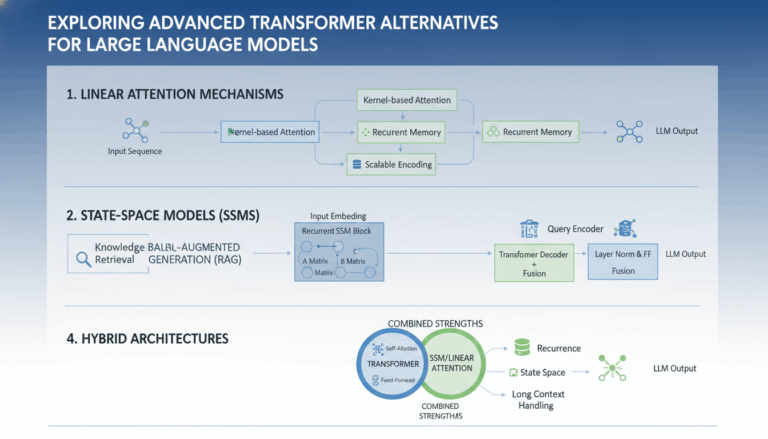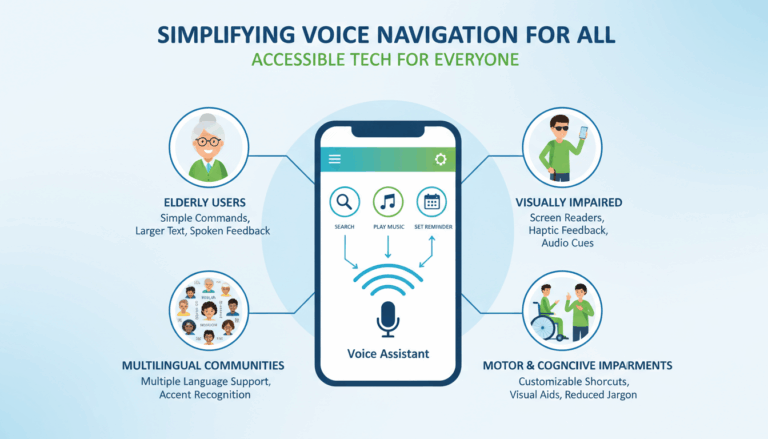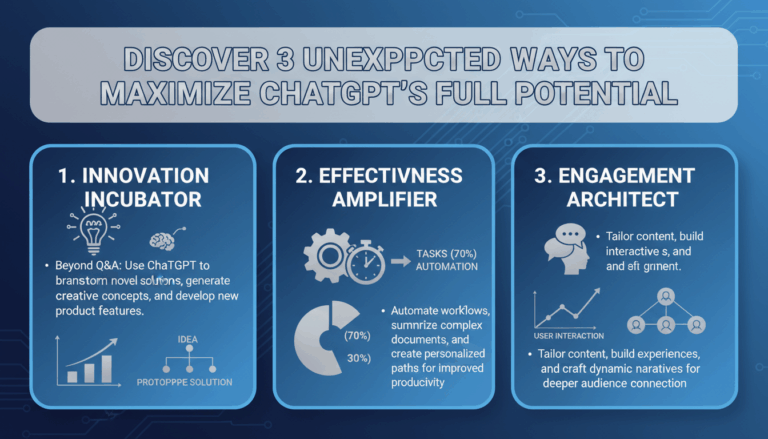Understanding Common Failures in Voice AI Agents
Voice AI agents have become increasingly prevalent in various applications, from customer service chatbots to personal assistants like Amazon’s Alexa and Google Assistant. Despite their widespread use, these systems often encounter several common failures. Understanding these failures is crucial for creating more reliable and effective voice AI solutions.
Inaccurate Speech Recognition
One of the primary failures in voice AI agents is inaccurate speech recognition. Here’s why it happens and how you can address it:
- Accent and Dialect Variations: Voice AI often struggles with different accents and dialects, leading to misinterpretation of the user’s speech.
-
Solution: Train your models on diverse datasets that include various accents and dialects. Incorporate transfer learning to adapt pre-trained models for specific linguistic characteristics.
-
Background Noise: Environmental sounds can confuse AI agents, causing poor recognition accuracy.
-
Solution: Implement noise-cancellation algorithms and enhance the signal-to-noise ratio by preprocessing the audio input.
-
Homophones Confusion: Similar-sounding words can be mistaken for each other.
- Solution: Contextual understanding algorithms can help distinguish homophones by analyzing the overall context of the speech.
Inadequate Natural Language Understanding (NLU)
Once speech is transcribed into text, understanding the user’s intent is crucial. Failures at this step can lead to unsatisfactory user experiences:
- Ambiguity in User Intent: Users often have multiple ways to express the same intent.
-
Solution: Employ robust intent recognition frameworks that utilize deep learning to map various phrases to consistent user intents.
-
Complex or Compound Queries: Single queries containing multiple intents can be challenging to process.
- Solution: Decompose compound questions into simpler tasks using syntactic and semantic parsing techniques.
Over-reliance on Training Data
Many voice AI systems rely heavily on their training datasets, which can introduce several issues:
- Bias in Training Data: If the training data is biased, the AI system will inherit those biases.
-
Solution: Curate diverse and balanced datasets. Regularly audit your datasets to identify and mitigate bias.
-
Insufficient Data Volume: Limited training data can result in an undertrained model.
- Solution: Use data augmentation methods to artificially expand your dataset, such as paraphrasing and adding noise.
Poor Error Handling
Error handling is often neglected, leading to user frustration:
- Misinterpretation of Commands: Incorrect responses can occur when the system misunderstands a command.
-
Solution: Implement fallback mechanisms that ask users to clarify unclear commands.
-
Lack of Feedback Loop: Without user feedback, the system may repeatedly make the same errors.
- Solution: Create a feedback loop for continual model improvement based on user interactions.
Privacy and Security Concerns
Voice AI systems can compromise user privacy through data mishandling and inadequate security measures:
- Unauthorized Data Access: User data may be accessed or shared without consent.
-
Solution: Use encryption techniques for data storage and transmission. Implement strict data access controls and regularly update privacy policies.
-
Unintended Data Sharing: Some systems might inadvertently share data through third-party integrations.
- Solution: Carefully vet all external integrations and establish clear data-sharing agreements.
By addressing these common failure points, developers can significantly improve the robustness and user satisfaction of voice AI systems. Using iterative testing and incorporating user feedback can lead to AI models that not only perform better but also provide a more personalized and secure user experience.
Designing Effective Conversation Flows
Effective conversation flows are crucial for voice AI agents to provide meaningful and human-like interactions. Designing these flows requires careful planning and implementation. Here’s how to create effective conversation flows that enhance user experience:
Understand User Context and Intent
- User Profiling:
- Utilize analytics to understand user behavior, preferences, and common queries.
-
Create user personas to anticipate diverse needs and tailor conversations accordingly.
-
Intent Recognition:
- Implement natural language processing (NLP) techniques to accurately discern user intent.
- Use machine learning models trained on extensive datasets to improve intent recognition accuracy.
Structure Conversations Logically
- Design Conversation Paths:
- Map out potential dialogue paths using flowcharts or dialogue trees to anticipate various user interactions.
-
Ensure that paths are flexible and can handle unexpected user inputs or deviations.
-
Use State Management:
- Implement state management to maintain context across interactions. This allows the AI to remember previous interactions and respond contextually.
- Examples of effective state management include the use of session variables or context objects.
Emphasize Usability and Accessibility
- Simplified Language:
- Avoid technical jargon. Use clear and concise language that is easily understandable by the average user.
-
Provide examples or rephrase content for clarity when necessary.
-
Multi-modal Support:
- Design conversation flows to support multiple input methods, like voice and text, enhancing accessibility.
- Ensure responses are adaptive to both the interface employed and the context of the user interaction.
Provide Robust Error Handling
- Fallback Mechanisms:
-
Design fallback mechanisms to gracefully handle misinterpretations or errors. These might include asking clarifying questions or redirecting users.
-
Clarification Prompts:
- Offer help prompts or suggest alternative phrases to guide users back on track.
Implement Feedback Loops
- Real-time Feedback:
-
Collect real-time feedback from users about their interaction experiences. This data should be analyzed and used to refine conversation strategies.
-
Iterative Updates
- Regularly update and test conversation flows using A/B testing or user studies. Adjust strategies based on user satisfaction and feedback.
Monitor and Measure Performance
- Engagement Metrics:
-
Track metrics such as completion rates, user satisfaction scores, and interaction lengths to assess the success of conversation flows.
-
Continuous Improvement:
- Use collected data to refine conversation flows, focusing on reducing friction and enhancing user satisfaction.
By integrating these strategies, developers can design conversation flows that not only meet user expectations but also create seamless, enjoyable interactions. Continuous monitoring and adaptation will further ensure that the voice AI agents remain effective and relevant.
Implementing Robust Error Handling Mechanisms
Identifying Error Types
Before implementing error handling mechanisms, it’s essential to identify the types of errors that can occur in voice AI agents:
- Recognition Errors: Mismatches or inaccuracies during speech-to-text conversion.
- NLU Errors: Failures in understanding or interpreting user intents correctly.
- Execution Failures: Errors that arise when executing the user’s request or command.
- Response Errors: Inappropriate or incorrect responses due to data retrieval issues.
By categorizing errors, you can tailor your error handling strategies to address each specific type.
Designing Fallback Mechanisms
Fallback mechanisms are crucial for handling unexpected user inputs or system errors gracefully.
- Clarification Prompts: Design prompts that ask users to repeat or rephrase their request.
- Example: “I’m sorry, I didn’t catch that. Could you please say it again?”
- Multi-layered Fallbacks: Implement various levels of fallbacks that escalate based on the number of failed attempts.
- Example: After several failed intents, offer a guided list of potential queries.
Implementing Contextual Error Recovery
Efficient error recovery maintains conversation flow and improves user experience:
- Context Preservation: Maintain conversation context to deal with errors correctly.
- Use session variables or context objects to retain user input history.
- Adaptive Responses: Modify responses based on user history and preferences to improve clarification attempts.
- Incorporate user profiling to recognize and recall frequent user queries.
Providing Real-time Feedback
Incorporating feedback mechanisms helps refine AI systems over time.
- User Feedback Collection: Prompt users for feedback when errors occur.
- Example: “Was that helpful? Please let us know how we can improve.”
- Sentiment Analysis: Use sentiment analysis on user feedback to prioritize error types and areas needing improvement.
Using Error Logging and Analytics
Leveraging systematic logging and analytics can enhance error tracking and resolution:
- Error Tracking Systems: Deploy logging systems that capture detailed error information, including time, type, and context.
- Tools such as ELK Stack (Elasticsearch, Logstash, and Kibana) can visualize and analyze logs effectively.
- Data-Driven Insights: Analyze logs to identify error patterns and high-occurrence issues, guiding further development focus.
Creating a Robotic Process Automation (RPA) Layer
An RPA layer can automate interactions that occur post-error detection:
- Automated Troubleshooting: RPA scripts can initiate resolution protocols for common error scenarios.
- Example: Automatically restart specific services or prompt system checks following error detection.
Testing and Iterative Improvement
Rigorously testing error handling mechanisms is crucial for robust AI performance:
- Scenario-based Testing: Simulate diverse error conditions to validate response adequacy and system resilience.
- A/B Testing: Implement iterative testing strategies to compare different error handling approaches and refine them based on user satisfaction metrics.
By adopting these comprehensive strategies for error handling in voice AI agents, developers can enhance system robustness and user satisfaction, ensuring smoother interactions and continuous improvement.
Ensuring Seamless Integration with Backend Systems
Understanding the Importance of Seamless Integration
For voice AI agents to function effectively and deliver robust user experiences, ensuring seamless integration with backend systems is critical. Such integrations enable voice agents to access necessary data and perform actions that meet user needs efficiently. Here’s how to achieve this:
Define Clear API Contracts
-
Standardize Communication: Ensure that communication between the voice AI and backend systems follows a well-defined API protocol. RESTful APIs are commonly used due to their simplicity and scalability.
-
Version Control: Implement versioning in your APIs to maintain backward compatibility as you introduce new features or updates.
-
Document Thoroughly: Maintain comprehensive API documentation. Utilize tools like Swagger or Postman to create and share easy-to-understand API documentation, allowing for smoother integration processes.
Maintain Data Consistency and Availability
-
Synchronous vs. Asynchronous Calls: Decide whether the integration requires synchronous calls (real-time interaction) or asynchronous calls (handling requests in the background). Use asynchronous methods for tasks that do not require immediate feedback to improve system responsiveness.
-
Cache Data: Employ caching strategies to store frequently accessed data. This reduces latency and ensures the voice AI has quick access to needed information without repeatedly querying the backend system.
Implement Robust Error Handling Mechanisms
-
Graceful Degradation: Design systems to handle failures gracefully without impacting the user experience. If a backend service is unavailable, provide default responses or alternative actions.
-
Retry Logic: Implement retry mechanisms with exponential backoff strategies to manage temporary disruptions in service or network issues efficiently.
Secure Data Transmission
-
Encryption: Protect data in transit between the voice AI and backend systems using secure protocols like HTTPS and TLS.
-
Authentication and Authorization: Employ OAuth 2.0 or other strong authentication mechanisms to manage and validate access to backend systems, ensuring only authorized entities can perform sensitive operations.
Utilize Middleware for Efficient Processing
-
Middleware Functions: Use middleware to process data flows between the voice AI and backend systems. Middleware can transform or validate data prior to reaching the final application logic.
-
Queue Systems: Implement message queue systems like RabbitMQ or Apache Kafka to handle data operations efficiently. This decouples the voice AI from backend constraints and allows systems to process requests asynchronously.
Continuous Monitoring and Optimization
-
Performance Monitoring: Deploy monitoring tools such as New Relic or Dynatrace to keep track of backend performance metrics. Analyze response times, error rates, and throughput to identify bottlenecks or failures.
-
Optimize Queries and Code: Regularly review and optimize database queries and integration code to ensure that transactions between the voice AI and the backend are as efficient as possible.
Foster Collaboration Between Teams
-
Cross-Functional Teams: Ensure collaboration between UX designers, developers, and operation teams. Regular meetings and shared objectives can help in aligning integration requirements and expectations.
-
Feedback Loops: Establish reliable feedback loops to iteratively improve integration processes based on real-world usage data and user feedback.
By adhering to these strategies, developers can create more adaptive and resilient voice AI systems that integrate seamlessly with backend systems, enhancing overall system performance and user satisfaction.
Conducting Comprehensive Testing and Quality Assurance
Building a Comprehensive Testing Strategy
Developing a voice AI agent requires a robust testing strategy to ensure it performs reliably under various conditions. Here’s how to build an effective testing framework:
Define Testing Objectives
- Clarify Goals: Clearly outline what you want to achieve through testing. This could be improved accuracy, resilience in edge cases, or enhanced user satisfaction.
- Identify Key Metrics: Determine which metrics will gauge success, such as error rate, response time, and user sentiment scores.
Create Realistic Test Scenarios
- User-Centric Scenarios: Design test cases that reflect real-world user interactions, considering different accents, languages, and emotional tones.
- Edge Cases: Include unusual scenarios like unexpected phrases, homophones, or contradictory commands.
Implement Unit and Integration Testing
- Unit Testing: Focus on testing individual components like speech recognition, natural language understanding, and response generation for correctness and efficiency.
- Integration Testing: Ensure different modules work together seamlessly and test the flow from voice input to system output.
Conduct Performance and Load Testing
- Stress Testing: Evaluate how the system manages under high user traffic loads and identify any bottlenecks or resource constraints.
- Scalability Tests: Simulate increasing loads to assess system scalability and observe how the AI’s performance is affected.
Employ Automated Testing Frameworks
- Automation Tools: Use frameworks like Selenium or Appium for repetitive test scenarios. Automated tests can speed up the testing process and ensure consistency.
- CI/CD Integration: Integrate automated tests into your continuous integration/continuous deployment pipelines for ongoing feedback and swift identification of defects.
User Acceptance Testing (UAT)
- Pilot Programs: Engage real users in controlled environments to provide feedback on the AI’s performance and usability.
- Feedback Analysis: Analyze feedback to uncover common pain points or areas of improvement in natural interaction flows.
Leverage Real-Time Monitoring and Analytics
- Implement Monitoring Tools: Use platforms such as New Relic or DataDog to gather real-time data on user interactions, error rates, and system performance.
- Continuous Refinement: Utilize data insights to continuously improve the AI’s capabilities by identifying patterns and troubleshooting recurrent issues.
Ensure Robust Security Testing
- Vulnerability Assessment: Conduct penetration testing and vulnerability scans to check for security loopholes.
- Compliance Checks: Ensure adherence to data protection standards and regulations like GDPR or CCPA.
Incorporating Feedback Loops
- Iterative Feedback: Establish ongoing feedback mechanisms, allowing users to report issues directly through the interface.
- Improve Based on Feedback: Regularly update the AI systems based on feedback loops to enhance response accuracy and interaction quality.
By meticulously applying these testing and quality assurance strategies, developers can significantly enhance the reliability and user satisfaction of voice AI agents. Continuous monitoring and iterative improvement are key to adapting to the evolving needs and expectations of users.”



